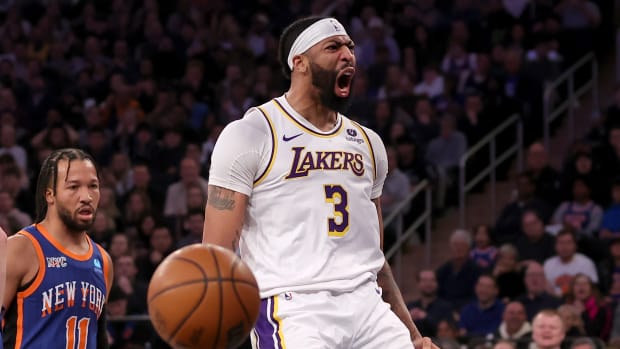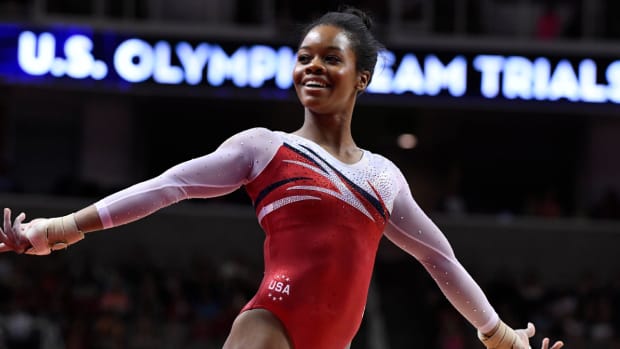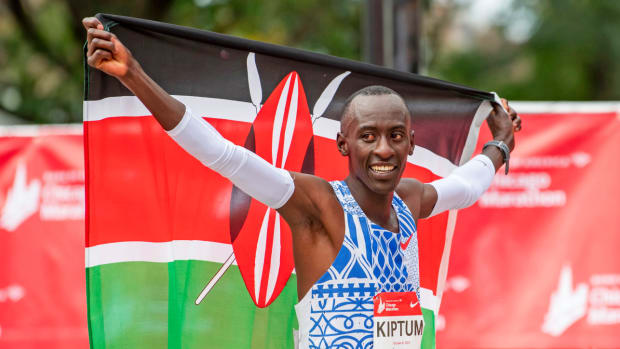U.S. women finish off France to continue dominating run, head into gold-medal game
The U.S. women’s basketball team beat France 86–67 in its semifinal on Thursday and will Spain on Saturday afternoon for the gold medal.
Here are three thoughts on the Americans, who’ll be shooting for their sixth straight gold, a run that dates back to 1996.
We got a glimpse of how the U.S. would lose
It’s unlikely they will. The U.S. women are as solid a favorite as any team in any sport in Rio. But the first half, which ended with France trailing by only 40–36, exposed the Americans for the first time. The U.S. failed to finish around the basket with its usual efficiency. Facing a little more size and getting a little more body than they were used to in previous games, the Americans shanked short shots and often drew back iron.
The 67% three-point shooting that the U.S. surrendered to European champion Serbia in group play didn’t matter much that day because the Americans dominated every other phase of play. But France knocked down timely threes in the first half, and the U.S. failed to sink any, and that combined with France’s physical courage were enough to keep things close.
After a superb third-quarter in which they forced a couple of shot-clock violations, the Americans slopped up the fourth. They frittered away much of a 25-point lead with carelessness, where against previous opponents they had usually padded their advantage until the buzzer.
If nothing else, the French modeled for Spain a mental way to approach the final. “People now see they are not God,” said Isbaelle Yacoubou, France’s 6' 7" captain, who led les bleus with 14 points. “They can be frustrated. They can miss, like us. We no longer play them as if we are fans.”
They’re making an art of the jump shot
To watch the U.S. at these Games is to watch a lot of women take a lot of open jump shots. And with the ultimate disposition of those shots so often a foregone conclusion—on the eve of the gold-medal game the Americans had launched 113 three-pointers and sunk 49 of them, while shooting 58% from the floor overall—there’s not much for a spectator to do but make a study of their form.
Diana Taurasi’s jump shot is ever so slightly bounced into, yet she’s shooting 56% from beyond the arc. With their inside-outside versatility, Elena Delle Donne and Breanna Stewart seem to be locked in a duel to see whose game can more closely resemble Kevin Durant’s. Maya Moore’s jumper is the beneficiary of all the other things she does; defenders worry so much about her dribble drives and post-ups that they don’t give much thought to a random pull-up or spot-up.
• Having a ball: U.S. women’s basketball is unstoppable and unapologetic
But let us praise Seimone Augustus, who started because point guard Sue Bird was sidelined with a sprained knee. Augustus hasn’t launched a three-pointer all tournament, but all on her own she’s making an argument for that endangered species—the mid-range jumper. No one on the team has a shot more classical than hers. It is a hood ornament. It’s what’s left of a chunk of marble after the sculptor gets rid of everything that doesn’t belong. It’s the one jump shot all other jump shots secretly wish to be. After she rises and squeezes it off, there’s a gathering rotation to the ball that seems to increase in speed during flight. And there’s an audacious confidence to the trajectory the ball traces—lower than most jump shots, but why bother with unnecessary arc when you know the thing is going in?
It’s Geno’s world and everyone else is just visiting
The Geno Auriemma who serves as U.S. Olympic coach is no different from the guy who presides at UConn and loves to hold forth. “Look, here’s the deal,” he told his players in their first meeting. “If you play defense and play hard, you’ll get minutes. How many minutes, and the quality of the minutes, will depend on how hard you play.”
Sometimes he has to catch himself. His players will screw up, and he’ll want to drop on them a plea that will work in Storrs, Ct., like, “How many times have we gone over that?” With this group, he realizes, not many. And he shuts up.
Even talk in Rio about whether the U.S. women are too good for their Olympic rivals feeds the glib, “Who me?” side of Auriemma’s personality. The good-for-the-game, bad-for-the-game debate puts him at the midpoint between fielding praise and being put-upon, a space he clearly enjoys occupying. Auriemma isn’t always diplomatic, but there’s more than a little emissary to the man.
• SI Vault: Geno is the Leader of the Pack | Sports Illustrated’s coverage from Rio
On one of UConn’s many post-NCAA title visits to the White House, Vice President Joe Biden once told Auriemma that, “If I had your hair, I’d be President.”
It’s only a short hop from a President Auriemma, who has five Huskies in these Olympics, to imagining UConn as a country unto itself.
Where would a team of current Huskies alumnae finish at these Olympics? They’d be on the podium, no doubt.




